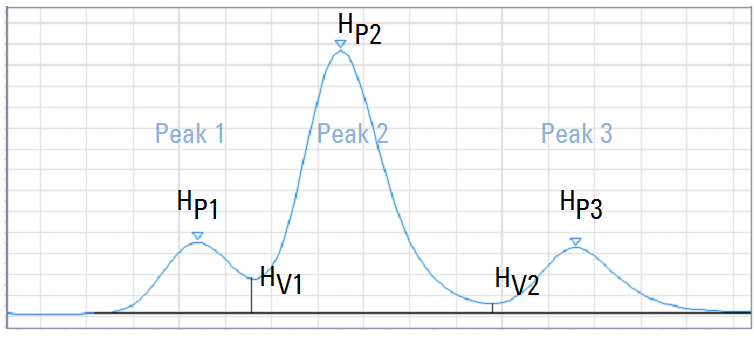Peak to valley ratio (EP/JP)
The peak to valley ratio (p/v ratio in the injection results) is calculated to indicate the quality of peak separation. It is calculated with the European and Japanese Pharmacopeia (EP, JP).
This value is different from the peak to valley ratio that you set in the advanced integration parameters! |
The peak to valley ratio is computed for peaks separated by a valley:
PV = peak height / valley height
If there are valleys to both left and right of a peak, the peak to valley ratio is computed for front and tail. The minimum p/v will be displayed.
For peak 1:
For peak 2:
For peak 3:
where | |
PV |
Peak to valley ratio |
PVF |
Peak to valley ratio, front |
PVT |
Peak to valley ratio, tail |
HPx |
Height of peak x |
HVx |
Height of valley x |
If a peak has multiple shoulders that are separated by valley, the peak to valley ratio is calculated for each shoulder.
Definition of a valley:
Its height and time are shared between two consecutive peaks
Its baseline is shared between two consecutive peaks
The absolute baseline height is greater than 10-5.
The peak to valley calculation always uses absolute values. Therefore, even if one or more peaks are negative, the peak to valley ratio will always be shown as a positive number.
The peak to valley ratio is not calculated for signals consisting of too few data points. |



